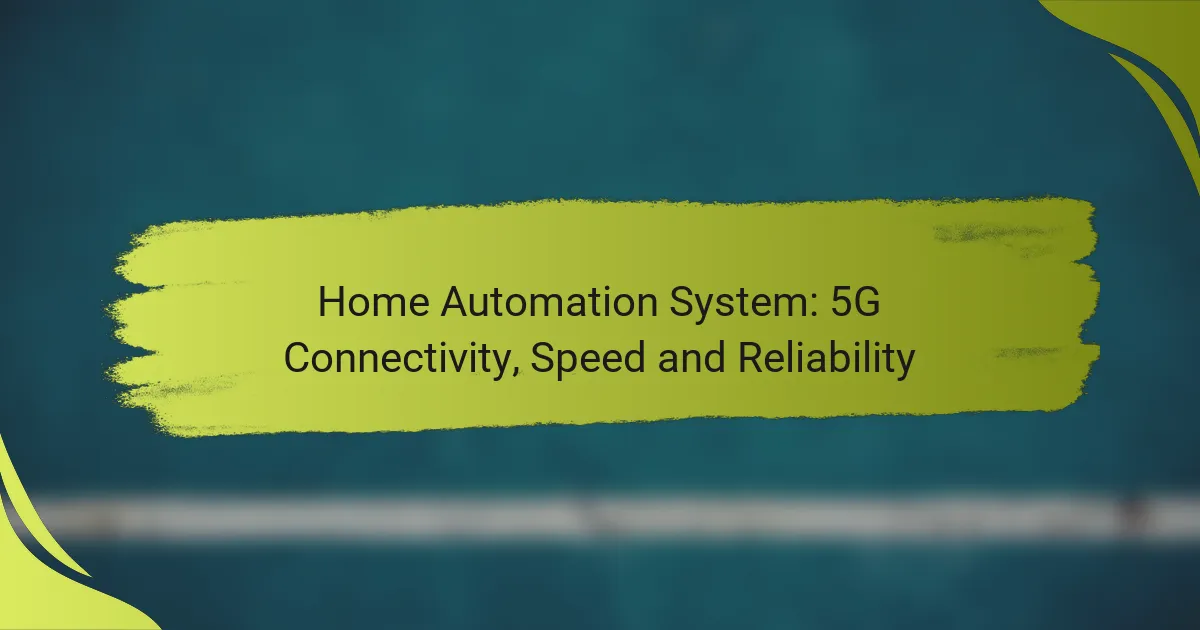The integration of 5G technology into home automation systems revolutionizes the way devices communicate, offering faster data transfer and enhanced reliability. With its low latency, 5G ensures real-time interactions among smart devices, creating a seamless and efficient smart home experience. From security cameras to smart thermostats, the benefits of 5G connectivity significantly elevate the functionality and responsiveness of these systems.
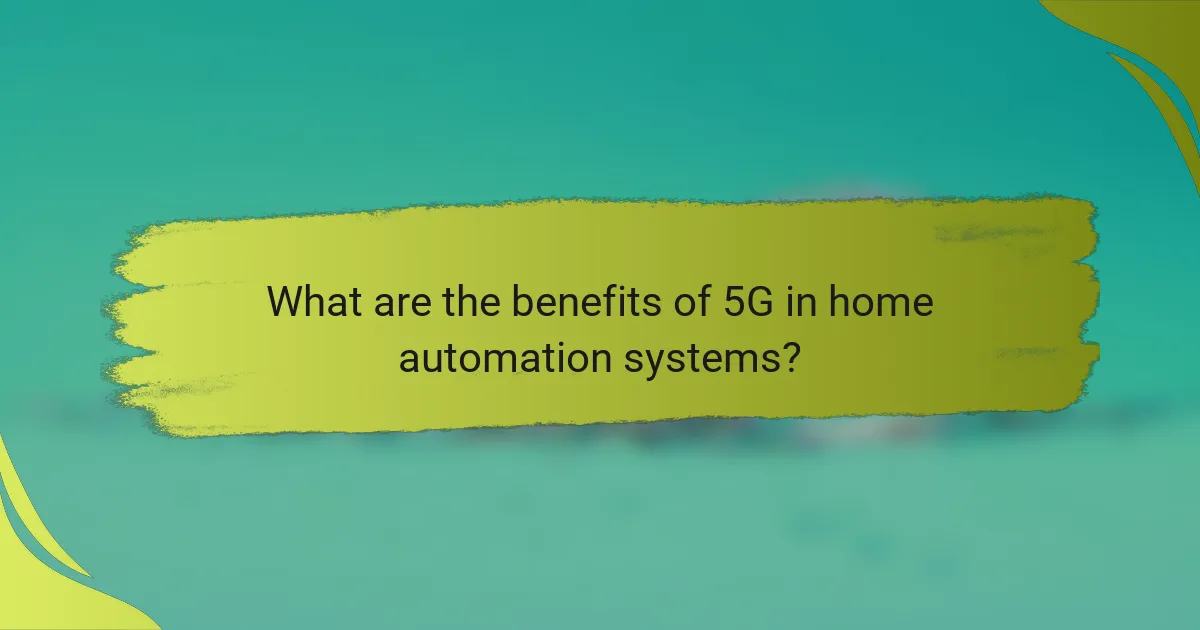
What are the benefits of 5G in home automation systems?
5G technology significantly enhances home automation systems by providing faster data transfer, improved reliability, and the ability to connect more devices seamlessly. This results in a more efficient and responsive smart home experience.
Increased speed for device communication
5G networks offer much higher speeds compared to previous generations, often exceeding 1 Gbps. This increased speed allows devices within a home automation system to communicate almost instantaneously, enabling quicker responses to commands and actions.
For example, when a user issues a command to turn on lights or adjust the thermostat, the device can respond in real-time, enhancing the overall user experience. This rapid communication is crucial for applications like video surveillance and smart appliances that require immediate feedback.
Enhanced reliability and connectivity
5G technology provides a more stable connection, reducing the chances of dropped signals or interruptions in service. This reliability is essential for home automation systems that depend on constant communication between devices.
With enhanced connectivity, users can trust that their smart home devices will function correctly, whether they are at home or remotely controlling their systems. This reliability is particularly important for security systems, where consistent connectivity can mean the difference between safety and vulnerability.
Lower latency for real-time control
One of the standout features of 5G is its low latency, often around 1 millisecond or less. This minimal delay allows for real-time control of devices, making interactions feel more immediate and fluid.
For instance, when adjusting a smart lock or activating a security camera, the near-instantaneous response time enhances user satisfaction and trust in the system. Lower latency is particularly beneficial for applications requiring precise timing, such as automated lighting systems that sync with motion sensors.
Support for more connected devices
5G networks can support a significantly higher number of connected devices per square kilometer, often in the range of hundreds of thousands. This capability is crucial for modern homes that utilize numerous smart devices, from lights and thermostats to security cameras and smart speakers.
As homes become increasingly automated, the ability to connect multiple devices without sacrificing performance is vital. Users can expand their home automation systems without worrying about network congestion or slowdowns, ensuring a smooth and efficient operation of all connected devices.
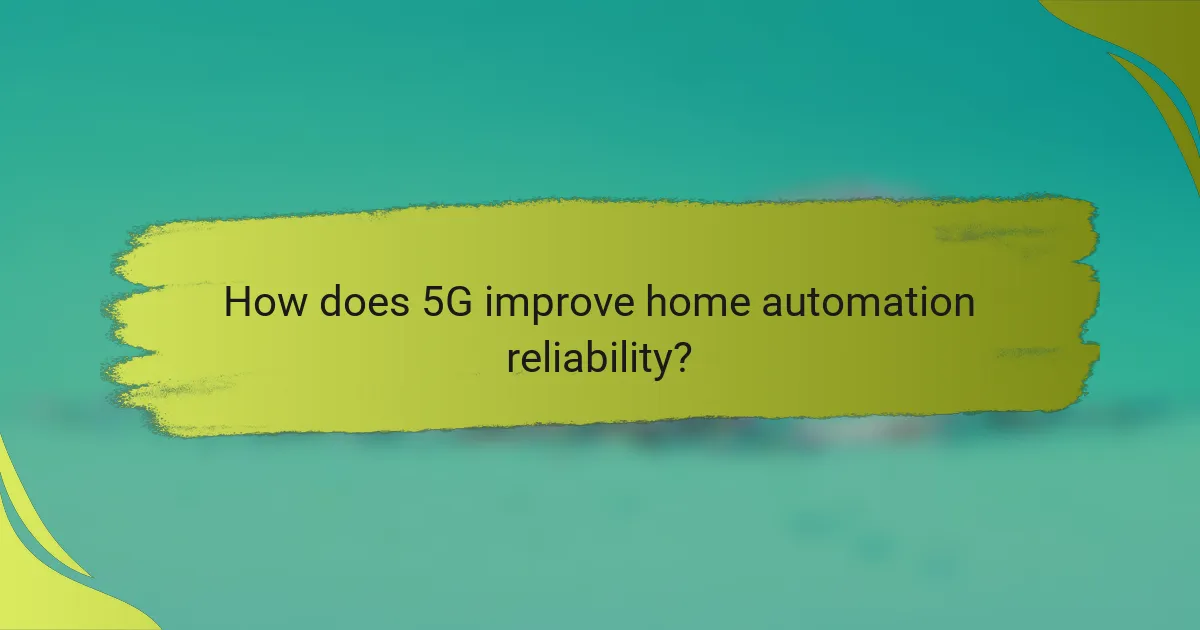
How does 5G improve home automation reliability?
5G enhances home automation reliability by providing faster data transmission and lower latency, which are crucial for real-time communication between devices. This technology ensures that smart home systems operate smoothly, reducing the chances of delays or failures in device interactions.
Redundant network connections
5G networks support multiple redundant connections, allowing devices to switch between different network paths seamlessly. This redundancy minimizes the risk of downtime, as if one connection fails, another can take over without interrupting service. For home automation, this means that smart devices can maintain consistent communication even during network disruptions.
For example, a smart thermostat can continue to receive updates from a mobile app even if the primary Wi-Fi connection is lost, thanks to 5G’s ability to utilize cellular networks as a backup. This feature is particularly beneficial in areas with unstable internet service.
Advanced error correction techniques
5G employs sophisticated error correction techniques that enhance data integrity during transmission. These methods help to detect and correct errors in real-time, ensuring that commands sent from a smartphone to a smart device are executed accurately. This is vital for applications like security systems, where a missed signal could lead to vulnerabilities.
For instance, if a user sends a command to lock a door, 5G’s error correction ensures that the command is received and executed correctly, even in environments with high interference. This reliability is essential for maintaining the security and functionality of home automation systems.
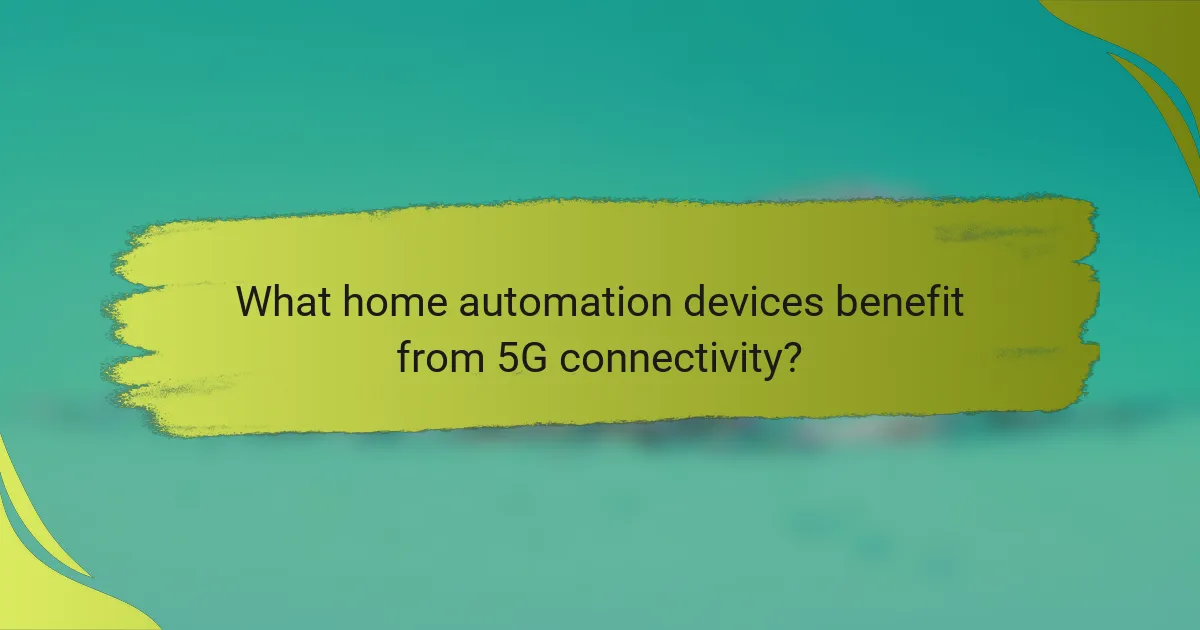
What home automation devices benefit from 5G connectivity?
Home automation devices that benefit from 5G connectivity include smart security cameras, smart thermostats, and voice assistants. These devices leverage the high speed and low latency of 5G to enhance their functionality and improve user experience.
Smart security cameras
Smart security cameras utilize 5G connectivity to stream high-definition video in real-time, allowing homeowners to monitor their property with minimal delay. The increased bandwidth of 5G enables multiple cameras to operate simultaneously without compromising video quality.
When selecting a smart security camera, consider models that support 5G for better performance, especially in areas with high foot traffic or multiple devices. Look for features such as motion detection and cloud storage options to enhance security further.
Smart thermostats
Smart thermostats benefit from 5G by enabling faster communication with weather services and other connected devices. This allows for more accurate temperature adjustments and energy-saving features based on real-time data.
To maximize the advantages of 5G, choose a smart thermostat that can integrate with other home automation systems. This ensures seamless control and monitoring, helping to maintain comfort while optimizing energy usage.
Voice assistants like Amazon Echo
Voice assistants, such as Amazon Echo, leverage 5G to process commands and respond more quickly. The low latency of 5G enhances voice recognition capabilities, making interactions smoother and more intuitive.
When using a voice assistant, ensure it is connected to a 5G network for optimal performance. This can significantly improve the responsiveness of smart home commands, making daily tasks more efficient.

How to choose a 5G home automation system?
Choosing a 5G home automation system involves evaluating compatibility with your current devices, understanding installation needs, and assessing ongoing subscription costs. Prioritize systems that seamlessly integrate with your existing technology while providing reliable connectivity and speed.
Evaluate compatibility with existing devices
Ensure that the 5G home automation system you choose is compatible with your current smart devices, such as cameras, lights, and sensors. Check for support of common protocols like Zigbee or Z-Wave, which can enhance interoperability.
Consider the ecosystem of your devices. For instance, if you primarily use products from a specific brand, select a 5G system that is designed to work well within that ecosystem to avoid connectivity issues.
Consider installation requirements
Installation can vary significantly between different 5G home automation systems. Some may require professional installation, while others are designed for DIY setups. Review the installation instructions and determine if you have the necessary tools and skills.
Additionally, assess the physical layout of your home. Ensure that the system can be installed in locations where 5G coverage is strong, as this will affect performance. For example, placing devices near windows may improve signal strength.
Assess subscription and service costs
When selecting a 5G home automation system, consider the subscription fees associated with cloud services or additional features. These costs can vary widely, so it’s essential to factor them into your budget.
Look for transparent pricing models and be wary of hidden fees. Some systems may offer a free tier with limited functionality, while others might require a monthly fee for full access. Compare these costs against the features provided to ensure you’re getting value for your investment.
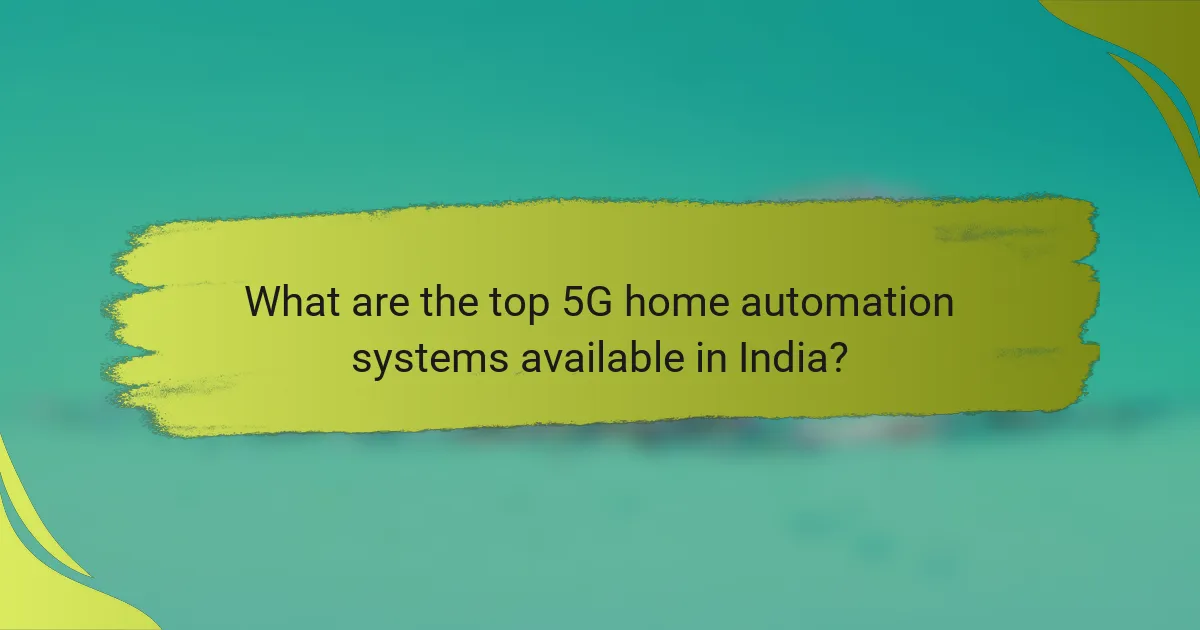
What are the top 5G home automation systems available in India?
The leading 5G home automation systems in India include Google Nest Hub and Amazon Echo Plus. These devices leverage 5G connectivity to enhance speed and reliability, making home automation more efficient and responsive.
Google Nest Hub
The Google Nest Hub is a versatile smart display that integrates seamlessly with various smart home devices. It uses 5G connectivity to provide quick access to information, control smart appliances, and manage routines through voice commands or touch.
When considering the Google Nest Hub, evaluate its compatibility with your existing devices and the Google ecosystem. It supports a wide range of smart home products, making it a flexible choice for many users.
Amazon Echo Plus
The Amazon Echo Plus is a smart speaker that doubles as a hub for controlling compatible smart home devices. With 5G connectivity, it offers fast response times for voice commands and can manage multiple devices simultaneously without lag.
Before purchasing the Echo Plus, check its compatibility with your smart home setup. It supports Zigbee devices, which can simplify the connection process for various smart gadgets, enhancing your home automation experience.
